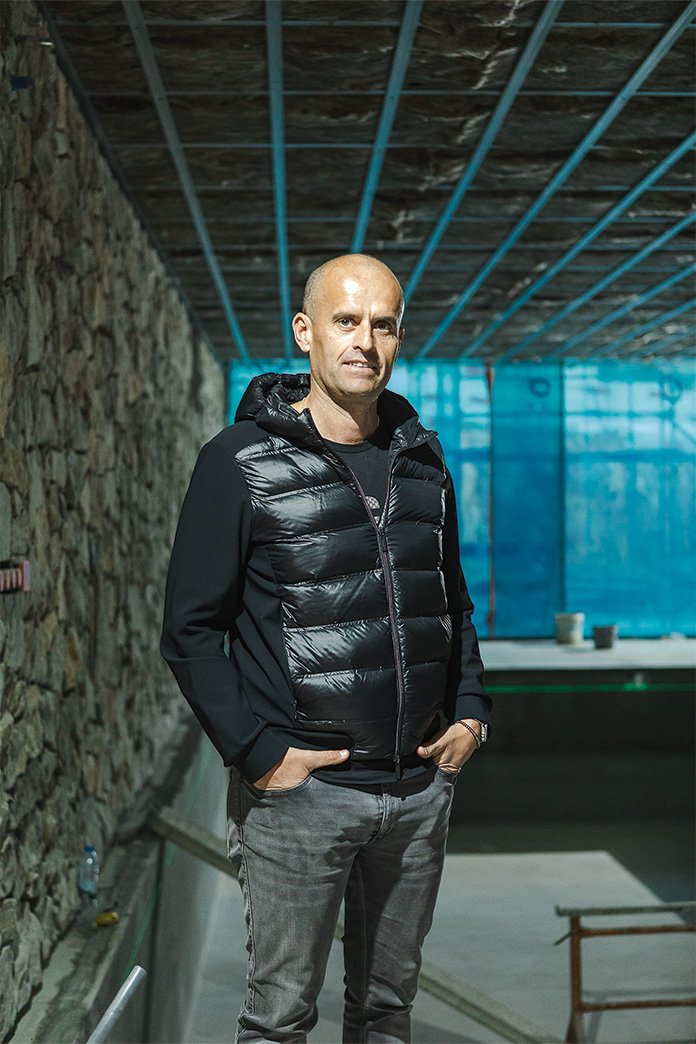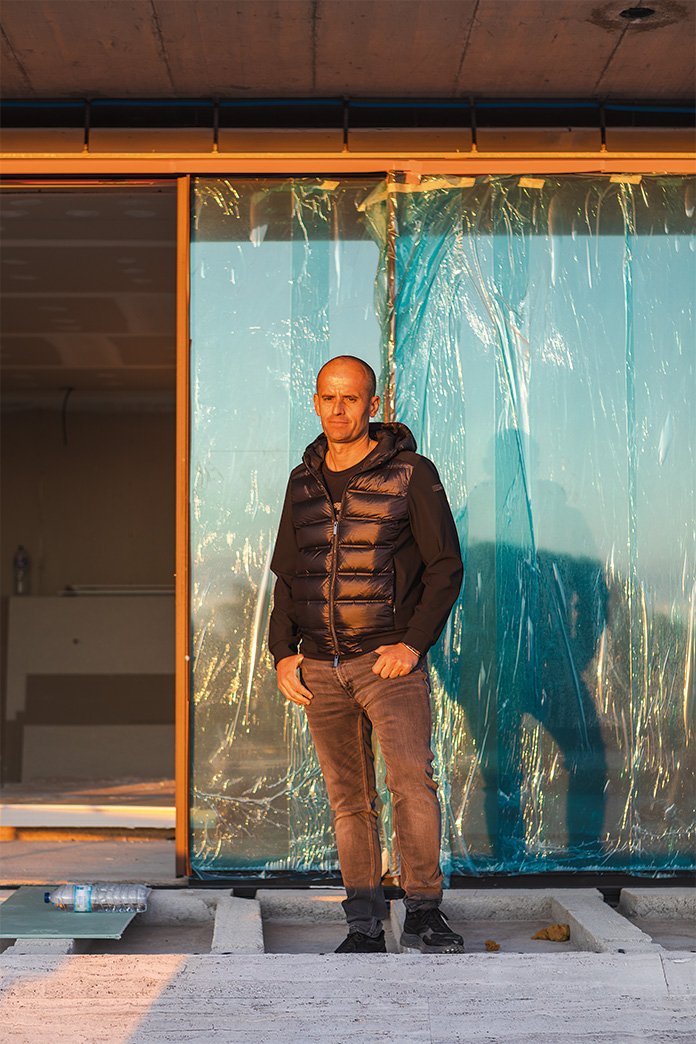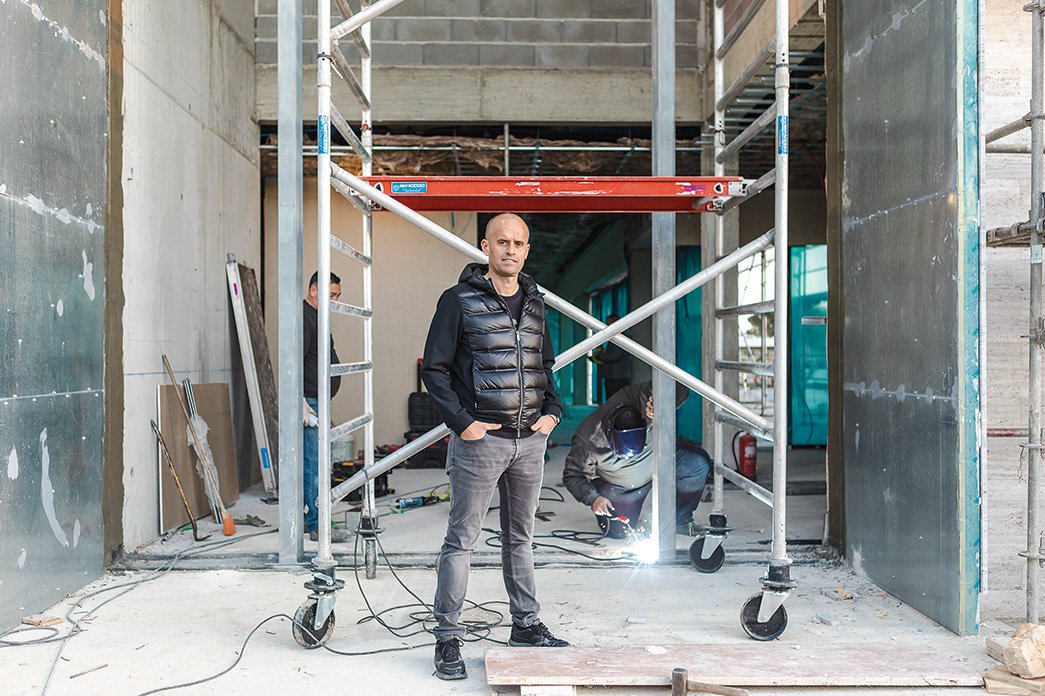Have you always dreamed about architecture?
Always. Ever since I was very young. My father was a ‘civil construction designer’ (as they used to call the course in Portugal). I have always lived amidst projects and, although there was a time when I pulled back a bit, even from school, my first project was when I was 13. I was involved in dance for a while, but then there came a day when I had to completely abandon the dance part and follow architecture. I just couldn’t create both things anymore.
What kind of dance?
It was hip hop and aerobics. It all had to do with creating choreographies, and that’s like architecture, it’s spontaneous. I never put choreographies together, it was what came out on the fly. I soon found myself giving classes and doing shows, putting together choreographies for groups, until I created Dance 4 Kids (which is well known in Oporto). For a while, I juggled the two things, but then I had to choose, and I went into architecture.
You created your first project at the age of 13. What project was it?
A house, in Vila Chã. I liked going to the office to draw, so my taste for creating started early on. What’s more, I had uncles that were connected to the arts, to paintings, and who, in a certain way, encouraged and helped me, even during university. I was very lazy; I was always a slacker and I never liked to study (laughs). I just wanted to get the degree so that I could practice, because I already had the vocation. If it hadn’t been necessary, I don't think I would have finished it. Honestly, I can’t get anything out of a course in architecture, and I’m sorry to say this, but it’s a fact. I don’t think what you’re taught is what real life is about, and that’s a shame.
Does doing architecture take you out of your comfort zone or is it something you live for intensely?
I live every hour of architecture intensely. I wake up at night and think about my work. My gym is a treadmill, always with the screen in front of me, where I watch programmes about houses, luxury, everything that is eccentric... I always pick up something and I love seeing architectural work by colleagues. As I’m doing such different houses, from such different cultures, I have this need to devour all those styles. I absorb everything from the client and go out looking to satisfy them.
What is the VVARQ style?
Right now, I can’t even define myself with a style. For example, I'm doing some exposed concrete houses that I never thought I would do, because I didn’t like it, and I’m enjoying the mix of wood and concrete. Other times, I try to counter it with marbles. In one of my projects in Cascais, in Quinta da Marinha, I’m working with grey travertine, but doused with acids, to get the texture and colour of concrete, and I’m also working with pau rosa wood.
"I think those who come to me know how I work”
What are the main challenges that an architect encounters during the time he is designing the project and, afterwards, when following up on that same project, but already on site?
We have several challenges. I only start creating a project when I already have it in my head. First of all, I create something three-dimensional, then I go to the computer and think about it, I live in it, and only when I feel that that house could be my house and that, because of what I’ve absorbed from the clients, it could also be their house, will I present it. Sometimes it’s funny how, with such simple projects, such small houses, it takes me a long time before I feel the click and, on the other hand, suddenly, with huge houses, I sit down and... [I shouldn’t say what I'm going to say (he laughs)] I do the project in one afternoon. Actually, I didn’t do it in one afternoon, maybe I was thinking about it since the day when I had the first meeting with the client, and that house overtook all the others, because, on that day, there was a click. So, the desire is to get out of the rest and enter that moment. And it’s funny, because sometimes people say: "You’ve only just got the invitation for this project and it’s already done...!”. That’s the art of anyone who creates. I think those who come to me know how I work. And I don’t like to abandon my projects, I like to carry them through to the end. I only live with the works; I can’t not go there every day. My friends are the foremen, the engineers and all the staff who work on the site. That is my life. That’s what I’m most passionate about. In the evening, I go to the gym, ‘switch off’ and, after dinner, I switch on again, late into the night.
Doing architecture forces you to travel a lot, to get to know other places, other cultures, other realities. What do you absorb from those moments?
When I travel and go out, whether for work or pleasure, I only like to go to nice places, because for me to leave my rhythm, my place, I have to go where I can absorb new things, which will provide me with something extra. I try to go to places where I can visit spaces and where I can absorb ideas that go with the level I’m at right now, as well as the style and the type of clients I have. Those are my travels, so the memories can only be good ones. I try to travel to places that I can recommend to the clients as well. When I want to transmit an idea to the client, especially when that client has a certain style, concept, and so that I can easily fit it into my idea, I send him to visit a hotel, a space, that has everything to do with him. The client goes there, absorbs it and often almost wants us to copy the hotel for the concept of their home (he laughs). Then we work on the idea, but we try to create something that we know the client will like. It has happened to me several times. This forces me to travel.
Did you ever imagine the leap that your life has taken when it comes to architecture?
I know that a lot of the invitations have come because I’m working with Cristiano Ronaldo at the moment. I’m doing his house, but I don’t like that label. All I have achieved hasn’t only to do with the work I have done with him over these four years. I’ve already done some things with him, it’s true, from the Castilho apartment in Lisbon, with its famous sunroom; to the house in Cascais and the one in Turin. But, before there was Cristiano, Vítor was already there and Vítor has always been like that. He was already making incredible houses and already had projects to develop on site. I am grateful to him for everything that has come up and the conveniences, because, as we know, he is the figure that he is, but, for me, that isn’t, in fact, the main thing. I have learned to control my ego and that’s another thing I’m very grateful to him for, because working on the ego is perhaps the most difficult thing in life and he is the greatest example of someone who can do it. I was forced to control mine, I switched off from that explosion of the name, sometimes I even forget that I’m working for Cristiano Ronaldo.
We dream of stunning houses, big, good areas, garden, design. In your opinion, what importance do houses have in people’s lives today?
90% of my houses have a programme. I usually say it’s the dream programme, for the families that achieve their dream and their goal in life, to get to that point, to build a house with everything, that gives them quality of life. It gives me a lot of pleasure to do those styles of houses. If we talk in terms of areas, I think the most comfortable house is a house with 300 sqm at the most. In fact, I can’t even understand how people manage to live in such big houses. But when the houses have lots of light, lots of life, and are very transparent with nature, it’s amazing. I have a house, it was my first big house, which is in Penha Longa, and it is an incredible project. The house has glass on one side, rock on the other, garden on the other, you even forget that you’re inside a house that is two thousand and something square metres large.
"I know that a lot of the invitations have come about because I’m working with Cristiano Ronaldo at the moment”











